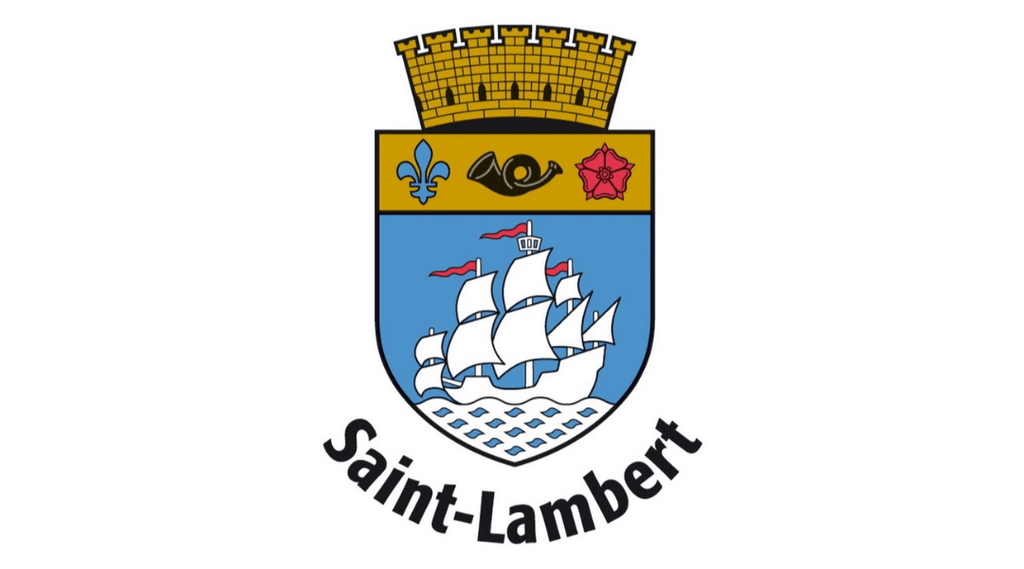Permits required for HVAC work in Saint-Lambert (South Shore)
Summary
In Saint-Lambert , the installation of a heat pump , an air conditioner or any mechanical device (generator, pool water heater, ventilation, etc.) requires a permit or a certificate of authorization before work begins. Specific rules govern the location , the minimum distance from the boundaries (2 m) , the maximum height (1.2 m) , the masking screen (≤ 1.5 m) , the permissible noise level (50 dB(A) at the property line, at all times) and the number of devices (2 per housing unit + 1 for the pool). Provincial obligations are added ( RBQ licenses, CCQ labor, master electrician and, if necessary, procedures with Hydro-Québec ). Administrative delays and PIIA may extend the schedule.
At AirGreen , we prepare compliant, clear and complete files to speed up municipal analysis — while remembering that the legal responsibility for obtaining authorizations remains that of the client (see “Your Responsibility / Our Support”).
Municipal permits required in Saint-Lambert
Work subject to permit or certificate of authorization
-
Install a heat pump (wall-mounted, central, multi-zone) or an air conditioner ;
-
Install a generator (emergency power);
-
Install a pool water heater ;
-
Add a mechanical device (ventilation, evacuation, visible conduits);
-
Carry out specific excavation or exterior development work;
-
Temporarily occupy public property (fences, containers, scaffolding, debris chute, parking reservation, street closure).
Approximate processing times : The City announces a processing time of up to 60 business days from receipt of all documents and payment. Allow for this time in your planning.
Installation parameters – heat pumps and air conditioners
-
Location : installation authorized in the front yard (excluding front), side or rear margin , ≥ 2 m from any property boundary.
-
Device height : ≤ 1.2 m (including base).
-
Masking : if visible from the street, provide a plant or acoustic screen ≤ 1.5 m high.
-
Noise : ≤ 50 dB(A) at all times at the property boundary (day/evening/night).
-
Number : 2 devices maximum per housing unit (heating/air conditioning) + 1 device possible for a swimming pool .
PIIA (architectural implementation and integration plans)
If the unit is visible from the street or involves a modification of the facade , your project may be subject to the PIIA (regulation 2234) :
-
Additional steps (architectural analysis);
-
Processing fees ;
-
Additional delays (often ≥ 10 weeks of full cycle).
We recommend validating PIIA subjection from the design stage to avoid returns.
Municipal file: documents to be provided and expected level of detail
Checklist – technical documents
-
Duly completed municipal form (permit or certificate of authorization);
-
Scaled site plan showing: lot boundaries, buildings, exact location of the device, distances to boundaries and main building, planned screening (if required), maintenance access;
-
Recent location certificate (or clear cadastral plan);
-
Manufacturer's technical data sheets : noise level (dB(A)) , dimensions, required clearances, power (BTU), electrical characteristics;
-
Summary connection diagram (without replacing the electrician's plans);
-
Photos of existing buildings (front, side, rear) to assess visibility from the street;
-
Letter of authorization from the union (co-ownership), if applicable;
-
Proof of occupation of public domain (if container/scaffolding) or request in progress.
Quality expected by urban planning
-
Clarity (readable legends, scale, north, distance rating);
-
Consistency between the plan and the technical data sheets (dimensions/weight/noise);
-
Compliance with margins, heights, and masking requirements;
-
Controlled impacts (drainage, snow, noise, neighborhood).
Good practices for installation and acoustics (AirGreen)
Choosing a location (concrete advice)
-
Prioritize the side/back yard , away from sight lines from the street;
-
Avoid the front margin and the 2m strip near the boundaries;
-
Snow free : raise just enough (without exceeding 1.2 m ) to avoid snow , ice and suction problems ;
-
Clearances : Respect the manufacturer's clearances (air intake/discharge) and the distance to neighbors ' air intakes .
Noise management – achieve 50 dB(A) at batch limit
-
Device selection : favor models with low dB(A) (standardized measurements);
-
Orientation : Direct the air discharge towards an open area rather than towards a fence or reflective wall ;
-
Vibration decoupling : use anti-vibration pads and a stable slab ;
-
Masking : a dense plant screen or an acoustic panel (≤ 1.5 m) can reduce sound perception without creating an echo ;
-
Maintenance : A dirty appliance becomes noisier. Schedule preventive maintenance .
Condensates, frost and safety
-
Condensate drainage : prevent any runoff towards the public domain or steps (risk of black ice);
-
De-icing ( defrosting mode): provide a flow without disturbing the neighborhood;
-
Winter clearing : regular snow removal around the unit to maintain performance and durability .
Provincial obligations: RBQ • CCQ • Electricity • Hydro-Québec
RBQ licenses (HVAC work)
The work must be carried out by a contractor holding the appropriate subcategories (e.g. 15.10 Refrigeration , 15.9 Heating appliances , etc.), depending on the exact nature of the work (residential/commercial, replacement/addition, ducts, etc.).
Workforce and Law R-20 (CCQ)
On a construction site , the workforce must hold the required skill certificates . Compliance with collective agreements , ratios , salaries and applicable regulations .
Electrical work
All electrical connections (power supply, dedicated circuit breaker, wiring gauge) are carried out by a master electrician (CMEQ). He files notices , coordinates all work requests and ensures that the calibration (intensity, protections, grounding) is correct.
Hydro-Québec – typical cases
-
New power supply or capacity increase (multiple appliances, high-power central heat pump);
-
Moving/adding counter ;
-
Connection work in coordination with the electrician.
Allow for processing times independent of the City.
Occupation of public domain and other logistical procedures
Temporary occupation
To install a container , reserve a parking space , install construction site fences or close a street , a temporary occupation permit is required.
-
Recommended notice (e.g. ≈ 10 working days );
-
No dumping of equipment/debris on public roads without authorization;
-
Coordination with Public Works and Engineering.
Opening/closing of water (municipal works)
Some interventions require the City to carry out water maintenance (by appointment). Fees apply depending on the time of intervention . Include these in your budget and plan ahead .
Concrete examples in Greater Montreal
Saint-Lambert (South Shore)
-
Permit required for heat pumps, air conditioners, generators, pool water heaters ;
-
Location : ≥ 2 m from the boundaries, ≤ 1.2 m in height, screen ≤ 1.5 m if visible;
-
Noise : 50 dB(A) at the property line at all times ;
-
Quantity : 2 devices per accommodation + 1 for swimming pool ;
-
PIIA : applicable if visible from the street (additional costs/delays).
Montreal – good practices that can be transferred
Many boroughs impose similar conditions: permits , plans , dB(A) sheets , location certificate , masking , distances and noise requirements. If your project affects several units (plex/condo), anticipate internal authorizations (union, building regulations).
Recent changes and points of attention
-
Local regulatory overhaul : consolidation of town planning rules, clarification of works subject to certification (including heat pumps and generators );
-
Administrative deadlines communicated by the City ( up to 60 working days for a complete file);
-
Harmonization of acoustic and visibility criteria (PIIA) to preserve tranquility and architectural character ;
-
Occupation of public property : formalized procedures and zero unauthorized deposits on public roads.
Common Mistakes to Avoid (and How We Prevent Them)
-
Incomplete file (missing plan, missing dB(A) sheets) → AirGreen provides an annotated implementation plan and a complete set of technical sheets .
-
Device too visible from the street → we integrate a discreet screen (≤ 1.5 m) or relocate the unit.
-
Failure to respect the 2 m → we note all distances and adapt the orientation.
-
Underestimated noise level → selection of silent models and anti-vibration decoupling .
-
Forgetting the PIIA → pre-validation when taking measurements.
-
Improvised electrical work → designated master electrician , adequate protection .
-
Neglected condensate management → drainage which does not cause ice or nuisance .
Recommended Steps (AirGreen Method)
-
Visit and survey : measurements, photos, analysis of lines of sight and sound propagation.
-
Design : choice of model (low dB(A)), suitable location , layout diagram .
-
Pre-validation of urban planning (if visibility/facade) and PIIA verification .
-
Municipal file : forms, scale plan , location certificate , technical sheets , authorization letters (co-ownership).
-
Filing and monitoring of the permit (integration into the construction schedule).
-
Execution : RBQ licensed team, master electrician , compliance with standards and clearances .
-
Commissioning : testing, acoustic control , drainage verification and end of work documentation .
FAQ – Saint-Lambert, Laval, Longueuil, North Shore and South Shore
Is a permit always required for a wall-mounted heat pump?
Yes, installation is subject to permit/certificate . Noise level , location and visibility must also comply with local regulations.
Can I install the unit on the front if I hide it?
The front margin should be avoided. Even if hidden, a unit visible from the street can trigger the PIIA with costs and delays .
How to prove 50 dB(A) at the batch limit?
Provide the official technical data sheet (noise level in nominal mode) and demonstrate on the plan that the orientation and the screen reduce the propagation . In case of doubt, we propose comparative measurements and improvements (orientation, decoupling, screen).
What if site access requires a container on the street?
A permit for temporary occupation of public property is required. Provide advance notice and coordinate logistics (no free dumping on the road).
Who is talking to Hydro-Québec?
The master electrician coordinates requests (if required) and plans interventions .
Your Responsibility / Our Support
Your Responsibility
Compliance with all applicable rules, permits and regulations remains your responsibility . While we, AirGreen , are available to provide guidance and advice , it is your responsibility to ensure that your project complies with local requirements and that all necessary permits have been obtained before work begins. Unless otherwise stated in our contract , obtaining permits and ensuring the installation is compliant is the customer 's responsibility.
Our Support
At AirGreen , we believe that a successful installation requires transparency and compliance . Our team guides you, informs you and supports you in understanding the administrative procedures related to your HVAC project. We help you identify the obligations , structure a complete file and communicate effectively with the City and, if necessary, with Hydro-Québec and your condominium association . For the electrical part, we coordinate a qualified master electrician .
Next step!
Talk to us about your project today. At AirGreen , we support you every step of the way for compliant, durable, and quiet HVAC installations in Saint-Lambert , Montreal , Laval , Longueuil , on the North Shore and the South Shore .

